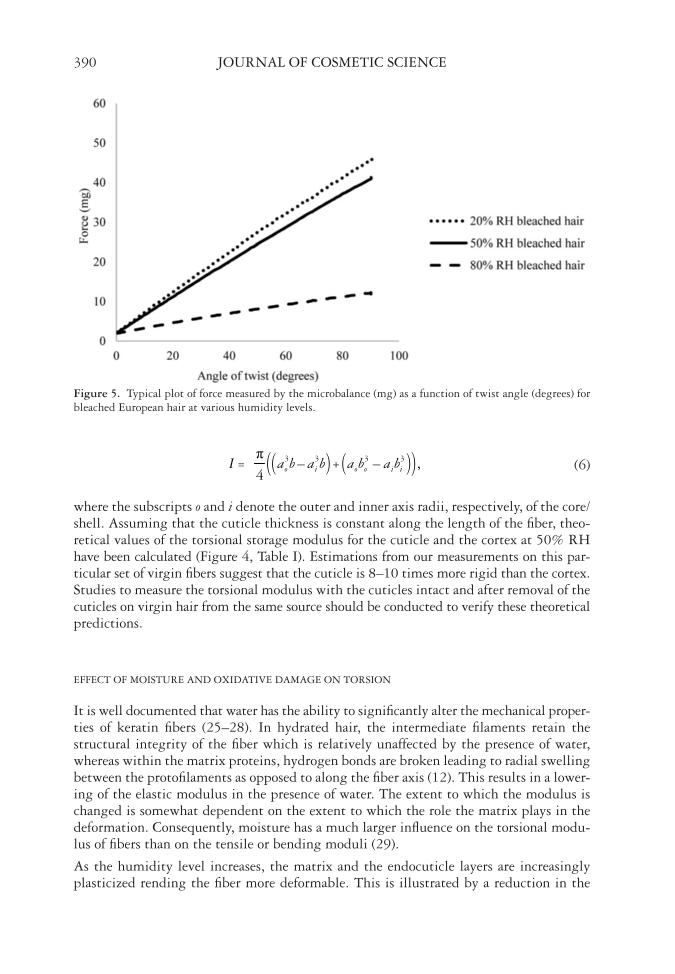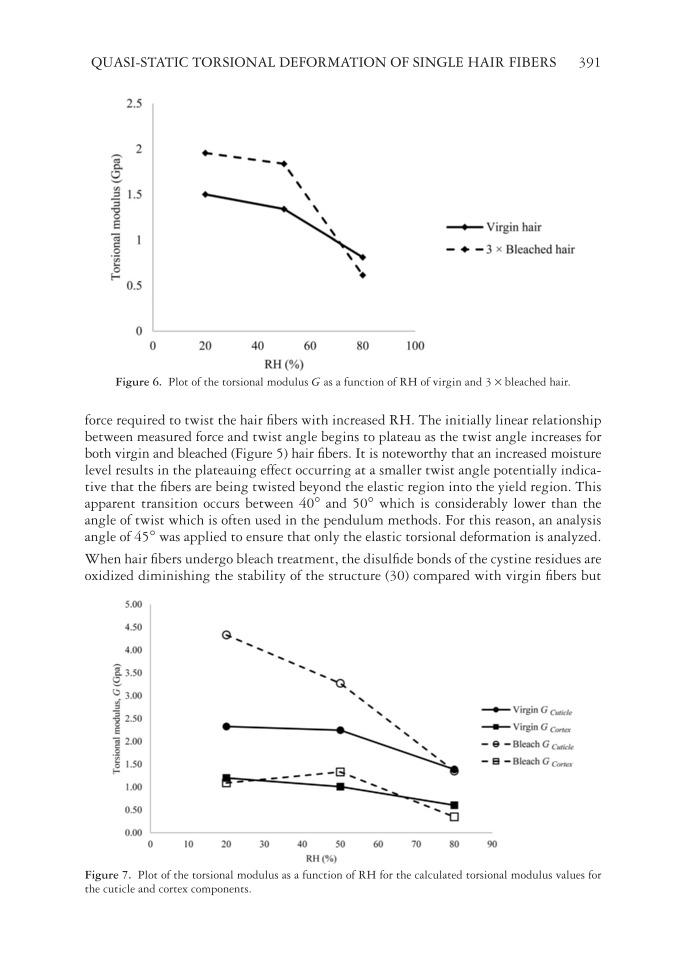JOURNAL OF COSMETIC SCIENCE 390 ʌ 3 3 3 3 + , 4 = – – o i o o i i I a b a b a b a b (6) where the subscri pts o and i denote the outer and inner axis radii, respectively, of the core/ shell. Assuming that the cuticle thickness is constant along the length of the fi ber, theo- retical values of the torsional storage modulus for the cuticle and the cortex at 50% RH have been calculated (Figure 4, Table I). Estimations from our measurements on this par- ticular set of virgin fi bers suggest that the cuticle is 8–10 times more rigid than the cortex. Studies to measure the torsional modulus with the cuticles intact and after removal of the cuticles on virgin hair from the same source should be conducted to verify these theoretical predictions. EFFECT OF MOISTURE AND OXIDATIVE DAMAGE ON TORSION It is well documented that water has the ability to signifi cantly alter the mechanical proper- ties of keratin fi bers (25–28). In hydrated hair, the intermediate fi laments retain the structural integrity of the fi ber which is relatively unaffected by the presence of water, whereas within the matrix proteins, hydrogen bonds are broken leading to radial swelling between the protofi laments as opposed to along the fi ber axis (12). This results in a lower- ing of the elastic modulus in the presence of water. The extent to which the modulus is changed is somewhat dependent on the extent to which the role the matrix plays in the deformation. Consequently, moisture has a much larger infl uence on the torsional modu- lus of fi bers than on the tensile or bending moduli (29). As the humidity level increases, the matrix and the endocuticle layers are increasingly plasticized rending the fi ber more deformable. This is illustrated by a reduction in the Figure 5. Typical plot of force measured by the microbalance (mg) as a function of twist angle (degrees) for bleached European hair at various humidity levels.
QUASI-STATIC TORSIONAL DEFORMATION OF SINGLE HAIR FIBERS 391 force required to twist the hair fi bers with increased RH. The initially linear relationship between measured force and twist angle begins to plateau as the twist angle increases for both virgin and bleached (Figure 5) hair fi bers. It is noteworthy that an increased moisture level results in the plateauing effect occurring at a smaller twist angle potentially indica- tive that the fi bers are being twisted beyond the elastic region into the yield region. This apparent transition occurs between 40° and 50° which is considerably lower than the angle of twist which is often used in the pendulum methods. For this reason, an analysis angle of 45° was applied to ensure that only the elastic torsional deformation is analyzed. When hair fi bers undergo bleach treatment, the disulfi de bonds of the cystine residues are oxidized diminishing the stability of the structure (30) compared with virgin fi bers but Figure 6. P lot of the torsional modulus G as a function of RH of virgin and 3 × bleached hair. Figure 7. Plo t of the torsional modulus as a function of RH for the calculated torsional modulus values for the cuticle and cortex components.
Purchased for the exclusive use of nofirst nolast (unknown) From: SCC Media Library & Resource Center (library.scconline.org)









































































































